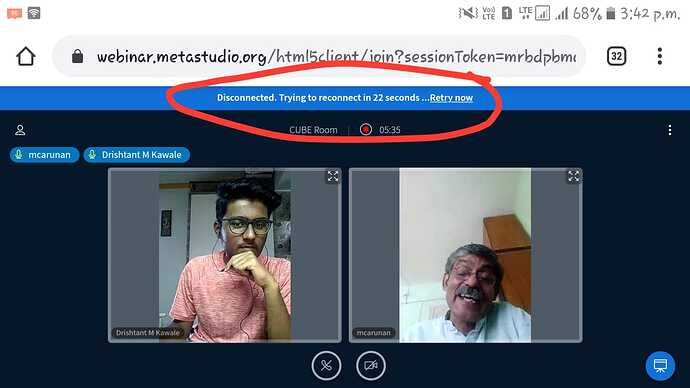8th May 2020 Summary of the CUBE Room Webinar!
So, Nikhil Sharma from Acharya Narendra Dev College (AND College) had joined along with @GN, @KiranKalakotiR, Aswathy Suresh from Nattika, Oyindril Dutta from Asansol, Abhishek from Kolenchery, @Arunan from Mumbai and myself.
So, the discussion started with Kiran asking Nikhil about his further plans on the Drosophila Model System on which he was working. He said that he is going to set traps for trapping the flies with his further plan to study the life cycle, life span and classify the fruitflies on the basis of their characteristics!
I know all these are a lot of things at once so we started step by step by asking the design of his experiment.
We came to know that he was just planning to keep one trap but CUBE doesn’t believe in keeping all the eggs in the same basket!
So, we made him understand the importance of having replicas.
Nikhil said that he will be taking plastic bottles and in that, he will be adding banana as the trap in one bottle and banana peel in the other bottle which will act as a medium too. But I asked, why two different traps?
To which he answered that he wanted to try out, how will it work?
So, we suggested that he should try both and see along with replicates and put regular updates. But GN added, there would arise a problem with the banana peel bottle. He asked what?
So, Sir said that we should find out the answer by ourselves!
How?
We should try keeping a banana peel in an empty bottle and then close it and observe what happens over a period of time.
And GN asked, what are our expectations!
The most important thing!
To which I replied, as the bottle will be closed, there are no chances of air passing inside, so the banana peel will get dried up, it will darken, it would shrink.
Then GN asked only these many things?
I said, yes.
Then asked about something which we have been learning in our textbooks - Spontaneous Generation!
What is it?
Spontaneous Generation means something arises from nothing!
Here, the something can be fungal or any other type of invasion on the banana peel!
We can say, that earlier nothing was visible on the peel but later, there is a chance that as we are not using a sterile (free from contamination) bottle or a sterile banana peel, we can observe growth in the form of fungus and the chances of it getting inside the bottle are more from the banana peel as compared to the bottle as the banana peels are having cells from which the fungus is deriving its nutrition!
So we saw, we got a context here which was directly related to our curriculum.
Then, carrying on with our discussion, Nikhil said he wants to study the life cycle of the fruitfly for which he will need at least some flies to start with.
But the question arises, is Nikhil actually culturing fruitflies!!?
How do we confirm that the animal which we have inside the bottle is actually the ones which we are looking for!!?
Here is where Taxonomical Classification pitches in!
Classification on the basis of its characteristics!
Kingdom, Phylum, Class, Order, Family, Genus and Species, this is the hierarchy of classification.
Crow and Fruitflies fall in the same kingdom!
What makes them different?
Their size?
Yes, but Noo.
@Arunan joked, does the difference in the height of Sir himself and Amitabh Bachchan make them fall in different species!!?
No right!!
So, what is that which makes them different?
Fruitflies and freshwater-crustacean Moina fall under the same phyla because of the presence of a segmented-body, compound eyes, jointed appendages and chitinous exoskeleton!
What makes them different?
The presence and absence of wings!
This diverges them into a totally different Order, which is Diptera for Drosophila and Branchiopoda for Moina.
Dipterans (Di- two and ptera- wings) are characterised by the presence of a pair of wings.
And Branchiopods (Branchio-something related to bronchioles of the lungs/gills and poda-feet) are characterised on the basis of the presence of gills on some of their appendages!
I have been working on Moina Model System from the past 8 months but this is when I recalled the meaning of Branchiopoda!
And this is how to further both the organisms differ in their classification!
We see that at a point, two distinctly different organisms are related!
This is too, a beauty of Science in itself where to some, taxonomy seems booooooring and to CUBists, it solves questions!!
If we develop an interest in what we work, we will be able to pass in on to others very beautifully!
And in the end, we discussed the relation between Cardamine and Drosophila!
Yes!
Botany and Zoology, the offsprings of the same parent Biology, but often considered un-related, but we CUBists have an opportunity to prove that they are related!
Further, we should discuss this and also we should bring back our Nobel-Prize winning works (as much as 6 Nobel Prizes for the wandering beauty - Drosophila!) and see whether we are able to understand these works and relate them!
Please contribute and start posting regular updates as well as a summary!
@Lydia @yash_sheregare @saida786110 and others!
![]()
![]()
![]() ) can join us!
) can join us!






